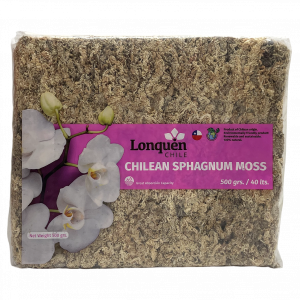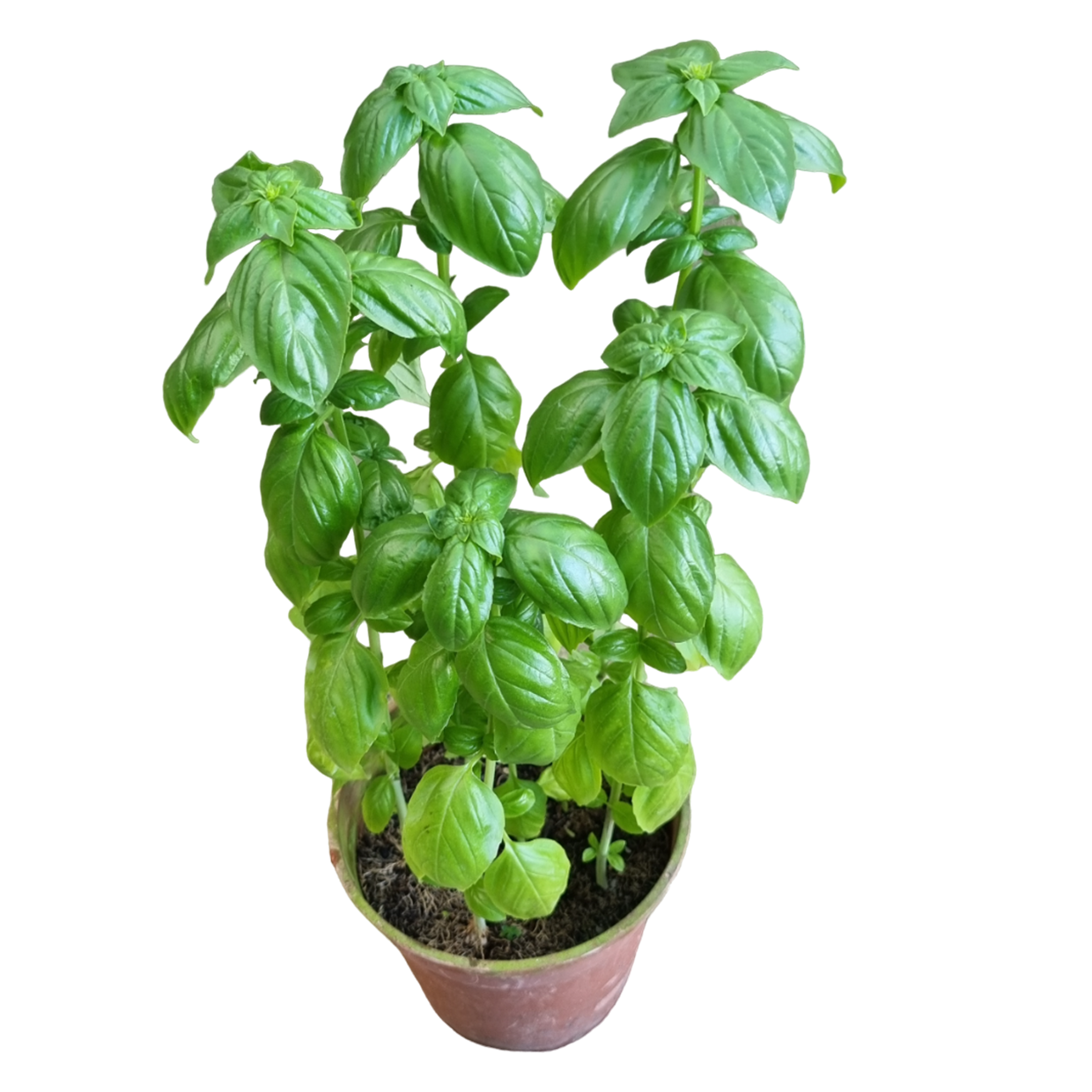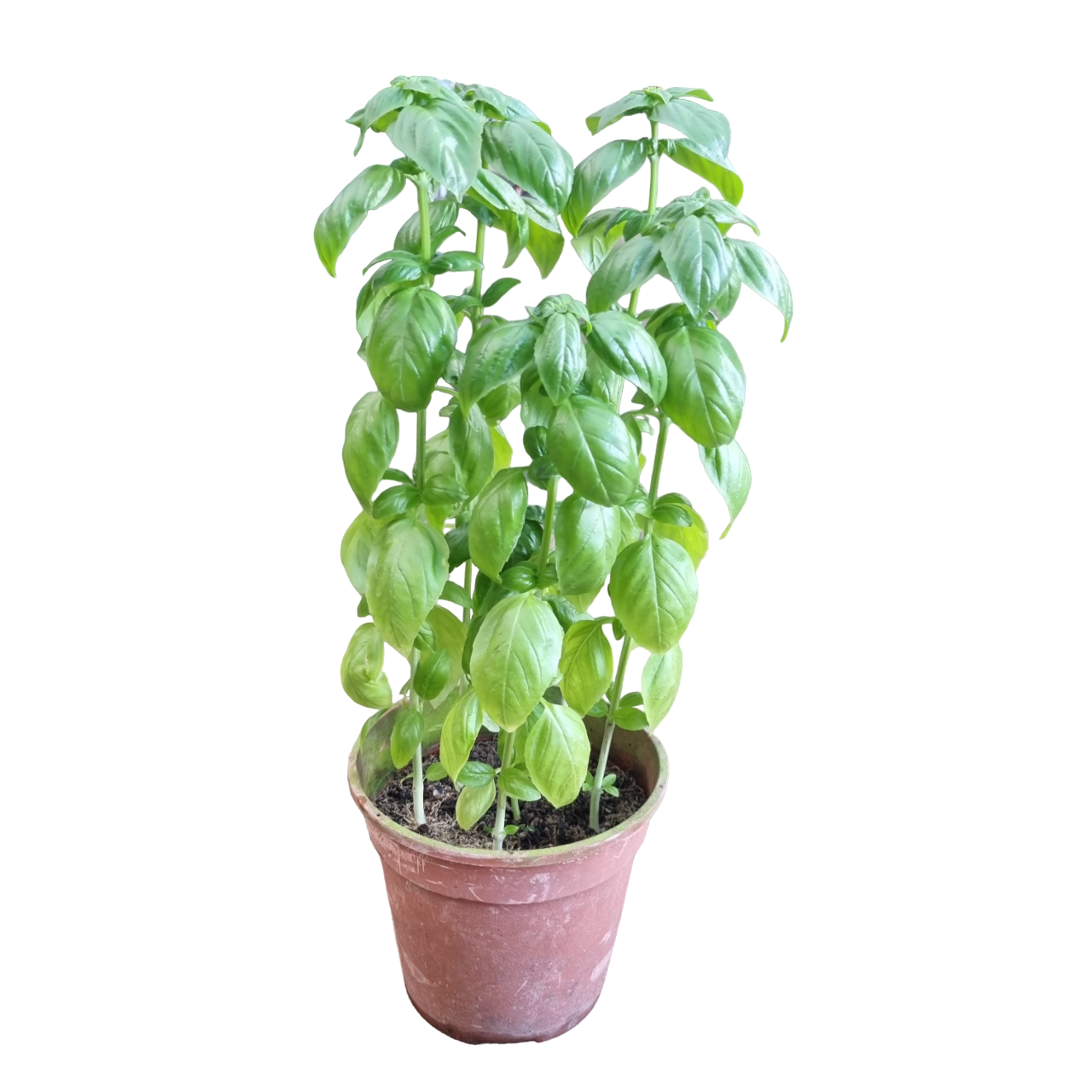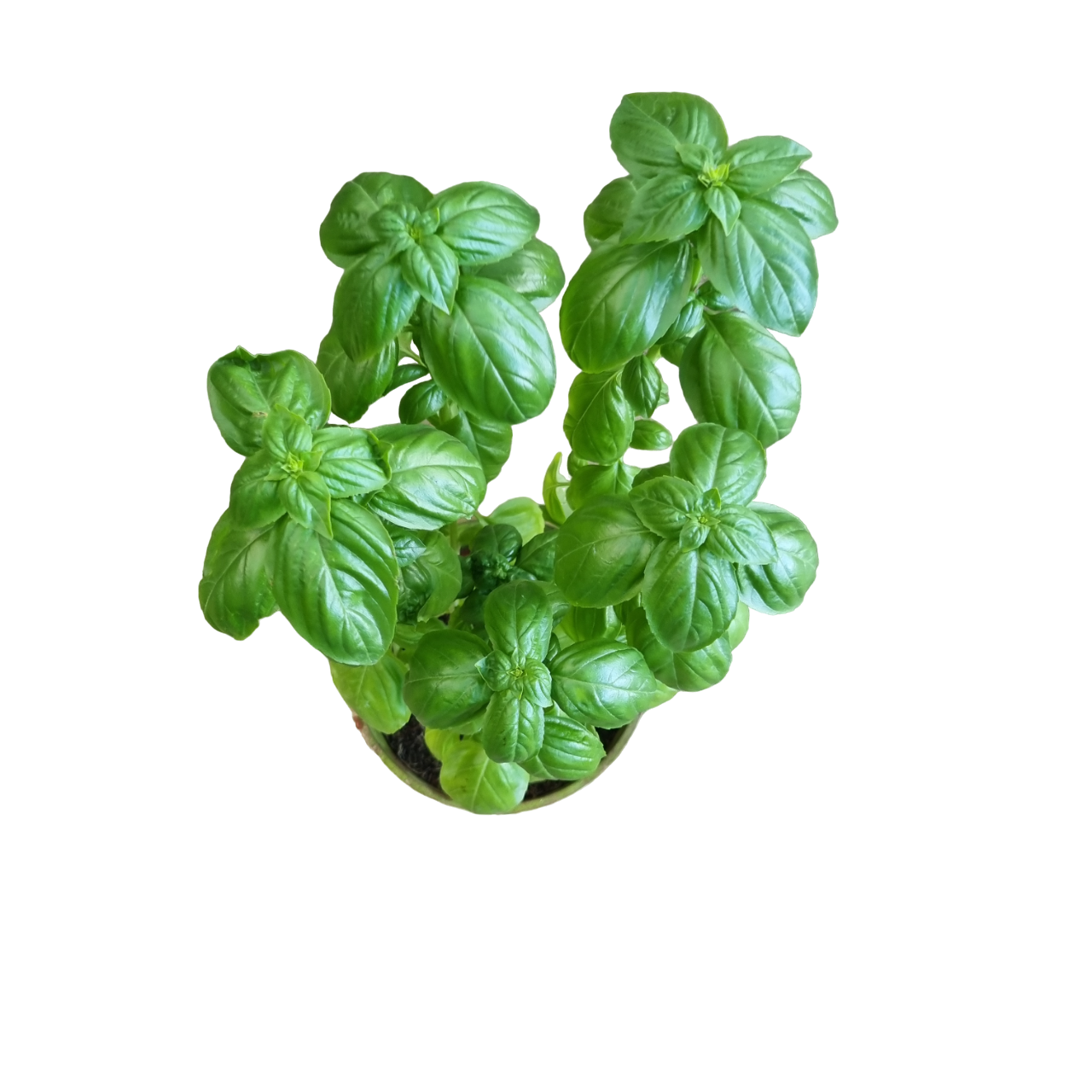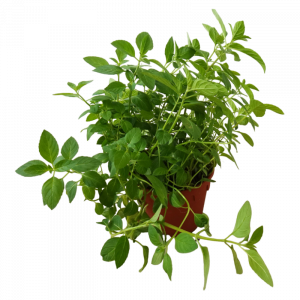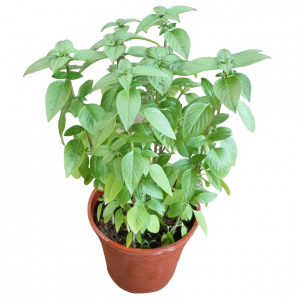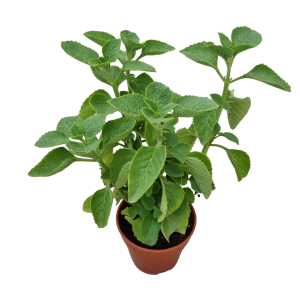Ocimum basilicum, commonly known as Sweet Basil, is a fragrant herb belonging to the Lamiaceae family. This versatile plant, native to tropical regions of Africa and Asia, is cherished not only for its aromatic leaves but also for its culinary applications in dishes ranging from pesto to sauces. Sweet Basil features bright green, oval-shaped leaves that are smooth and glossy, growing on sturdy stems that can reach up to 60 cm in height. The plant produces small, white to purple flowers, attracting beneficial pollinators to gardens. Known for its delightful scent, Sweet Basil is a staple in Mediterranean cuisine and is celebrated for its potential health benefits.
Plant Care Guide
Light Requirements: Sweet Basil thrives in bright, indirect sunlight. Ideally, position the plant where it can receive at least 6 hours of light daily. If the light is too intense, consider providing some shade during the hottest part of the day to prevent leaf scorch.
Watering: Keep the soil consistently moist but not waterlogged. Water the plant thoroughly when the top 2-3 cm of soil feels dry to the touch. Ensure that the pot has adequate drainage to prevent root rot, as Sweet Basil does not tolerate sitting in water.
Humidity: Basil loves humidity, so it’s beneficial to mist the leaves regularly or place the pot on a tray filled with water and pebbles to increase moisture levels in the air around the plant.
Soil: Use a well-draining potting mix rich in organic matter. A mix designed for herbs or general-purpose potting soil with added perlite works well, ensuring good aeration and drainage.
Fertilising: Feed Sweet Basil with a balanced, water-soluble fertiliser during the growing season.
Pruning: Regularly pinch back the growing tips to encourage bushier growth and prevent the plant from becoming leggy. Remove any flowers that develop to maintain leaf flavour and extend the plant’s productive lifespan.
Pest Management: Watch for common pests such as aphids and spider mites. If detected, treat infestations promptly with insecticidal soap or neem oil, ensuring the plant is rinsed well after treatment.
Lighting: Partial Shade
Watering: Water Thoroughly
Watering Frequency: When top layer of soil is dry
Aphids: Aphids are tiny, pear-shaped insects that range in color from green to yellow to black. They feed on the sap of plants using their sharp, piercing mouthparts and can cause stunted growth, curling leaves, and other damage. They reproduce quickly and can form large colonies, making them a common pest in gardens and greenhouses..
Spider mites: These pests can cause leaves to appear stippled or yellowed, and the plant may lose its leaves. Spider mites thrive in dry conditions, so increasing humidity levels and regularly misting the plant can help prevent them..
BIO-PLUS NPK 8-8-8+TE Organic Fertiliser: Every 2 Weeks.

